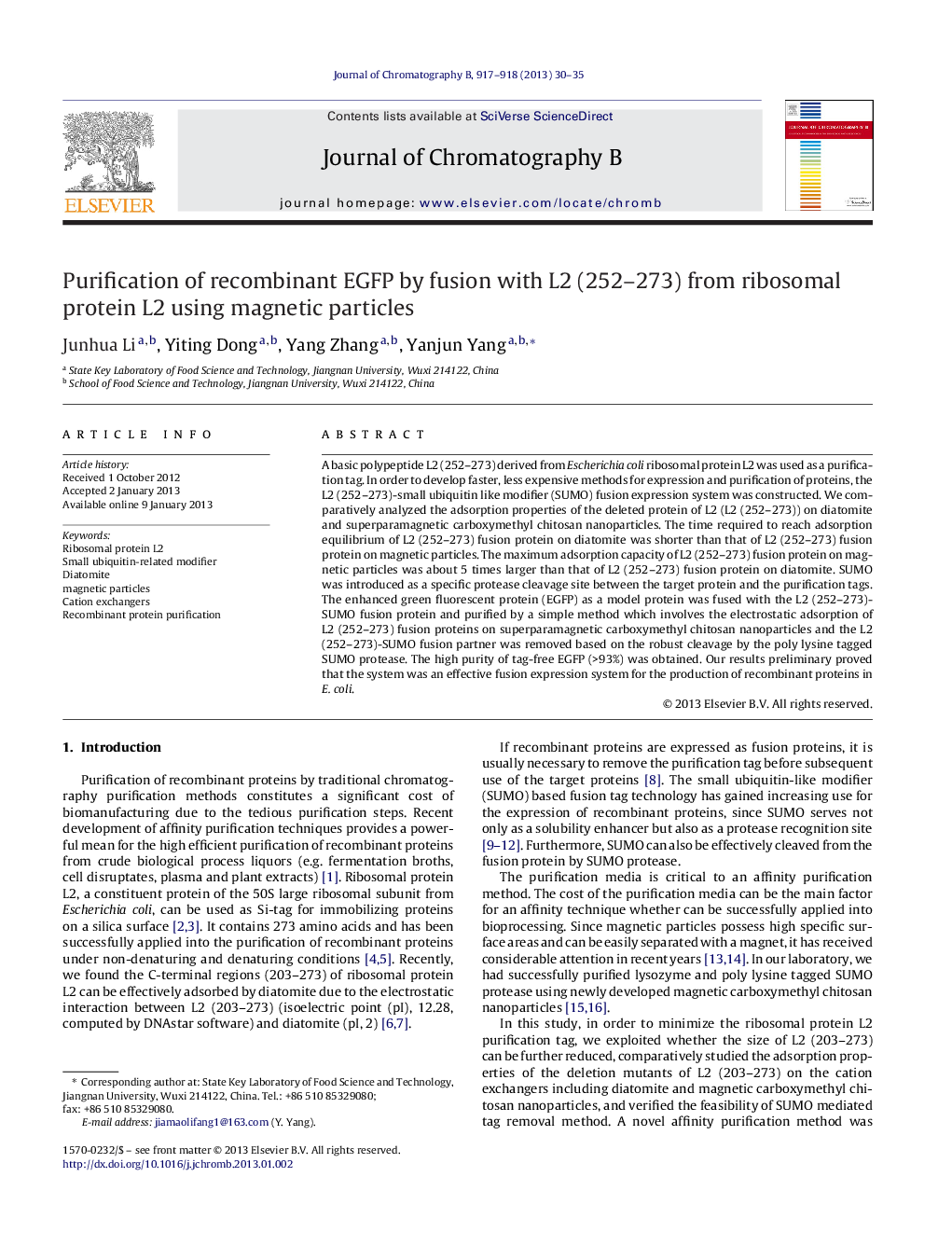| Article ID | Journal | Published Year | Pages | File Type |
|---|---|---|---|---|
| 1213522 | Journal of Chromatography B | 2013 | 6 Pages |
A basic polypeptide L2 (252–273) derived from Escherichia coli ribosomal protein L2 was used as a purification tag. In order to develop faster, less expensive methods for expression and purification of proteins, the L2 (252–273)-small ubiquitin like modifier (SUMO) fusion expression system was constructed. We comparatively analyzed the adsorption properties of the deleted protein of L2 (L2 (252–273)) on diatomite and superparamagnetic carboxymethyl chitosan nanoparticles. The time required to reach adsorption equilibrium of L2 (252–273) fusion protein on diatomite was shorter than that of L2 (252–273) fusion protein on magnetic particles. The maximum adsorption capacity of L2 (252–273) fusion protein on magnetic particles was about 5 times larger than that of L2 (252–273) fusion protein on diatomite. SUMO was introduced as a specific protease cleavage site between the target protein and the purification tags. The enhanced green fluorescent protein (EGFP) as a model protein was fused with the L2 (252–273)-SUMO fusion protein and purified by a simple method which involves the electrostatic adsorption of L2 (252–273) fusion proteins on superparamagnetic carboxymethyl chitosan nanoparticles and the L2 (252–273)-SUMO fusion partner was removed based on the robust cleavage by the poly lysine tagged SUMO protease. The high purity of tag-free EGFP (>93%) was obtained. Our results preliminary proved that the system was an effective fusion expression system for the production of recombinant proteins in E. coli.
► The L2 (252–273) from E. coli ribosomal protein L2 was used as a purification tag. ► Magnetic nanoparticles had a higher adsorption loading than the other adsorbents. ► Tag-free target protein purification by L2 (252–273)-SUMO fusion technology. ► The tag-free recombinant EGFP with a purity of greater than 93% was obtained.
